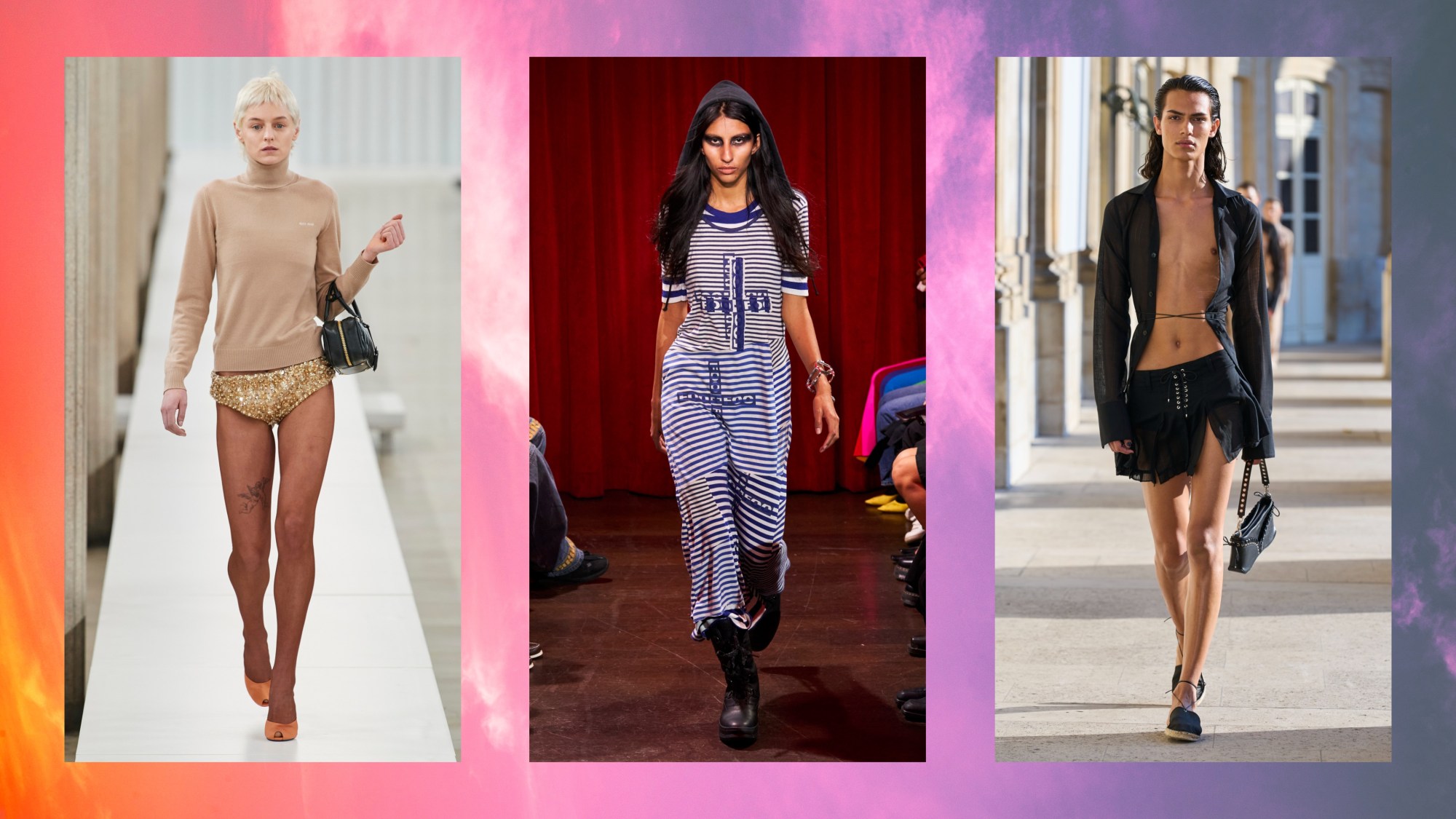Next time you’re flirting over text with a person sporting a mullet and a name straight out of the silverware drawer, ask them “What are u wearing rn ;)” and they might answer: “I don’t know…what are we wearing right now?” After all, gender non-conforming people themselves have no idea how non-binary people dress as a bloc or a stereotype. Fashion and gender presentation are both, in the purest sense of the term, social media — inherently relational substances you can use to give shape to your personalised experience like an existential sculpture. Maybe they’re born as self-conceptions, but at the end of the day, they externalise the desire to feel seen as you’d like to be seen. For gender nonconforming people who might not feel like single-handedly eviscerating societal expectations with their outfit every day, there’s a rub, though: there is no default way to ‘dress non-binary.’
Identifying as something other than male or female, or as some combination of the two, doesn’t require a dress code for validation — there’s no they/them bouncer at the door of the proverbial club, ready to unceremoniously eject anyone who dares to wear clothes that seem to situate them in a societally-normalised vision of gendered style. However, many non-binary people get stuck in their closets. They want to indicate to the world that they’d like to be perceived in a certain way, but lack the straightforward signifiers that masculinity and femininity have attached to certain garments like cheat codes: wear a tie for a +5 masculinity buff, a dress gets you +10 femininity, etc.
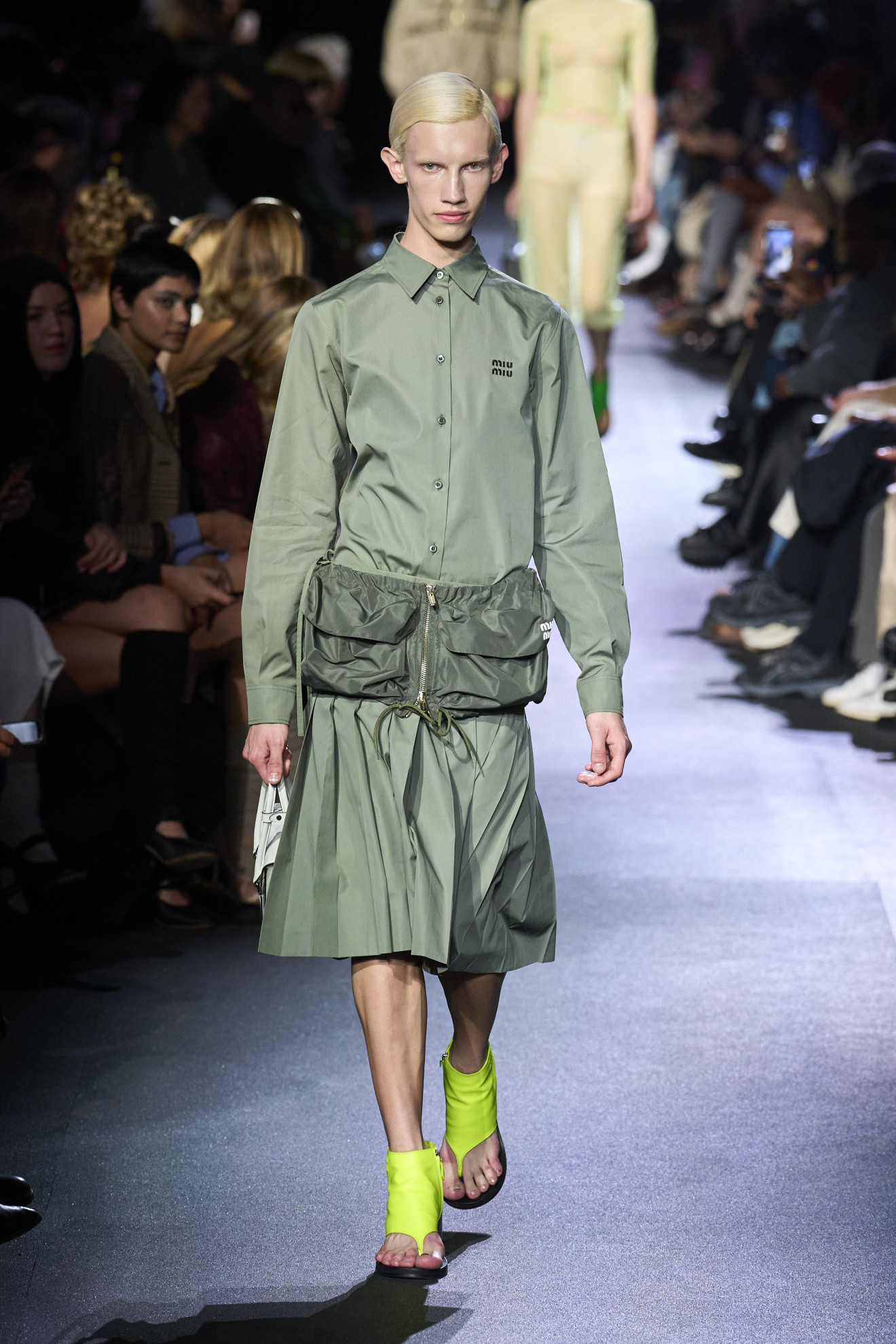
Attempts at ‘non-binary style’, or dressing to present as neither strictly masculine nor feminine, are usually mired in the binaries they supposedly subvert. The most common tactic for dressing androgynously is to gear up in pieces associated with the gender “opposite” to the one the wearer presents as, two prolific examples being 90s Brad Pitt in the infamous pink sequined minidress and Diane Keaton’s waistcoats and neckties in Annie Hall.
This approach is characterised by irony, which is both its greatest strength and its most damning weakness. It thumbs its nose at the idea that gendered style should be taken seriously and points to the fickle nature of these associations historically (we’ve all heard a hundred ‘fun facts’ about how high heels were reserved for men of means until the 18th century). At the same time, it’s also a stylistic choice that depends on an inherent opposition between masculinity and femininity to function. Thus, it can come across as performative or costume-y. It’s a fact often embraced and utilised to great effect by the drag community, but doesn’t always translate comfortably into an outfit for the office or a late-night bodega run.
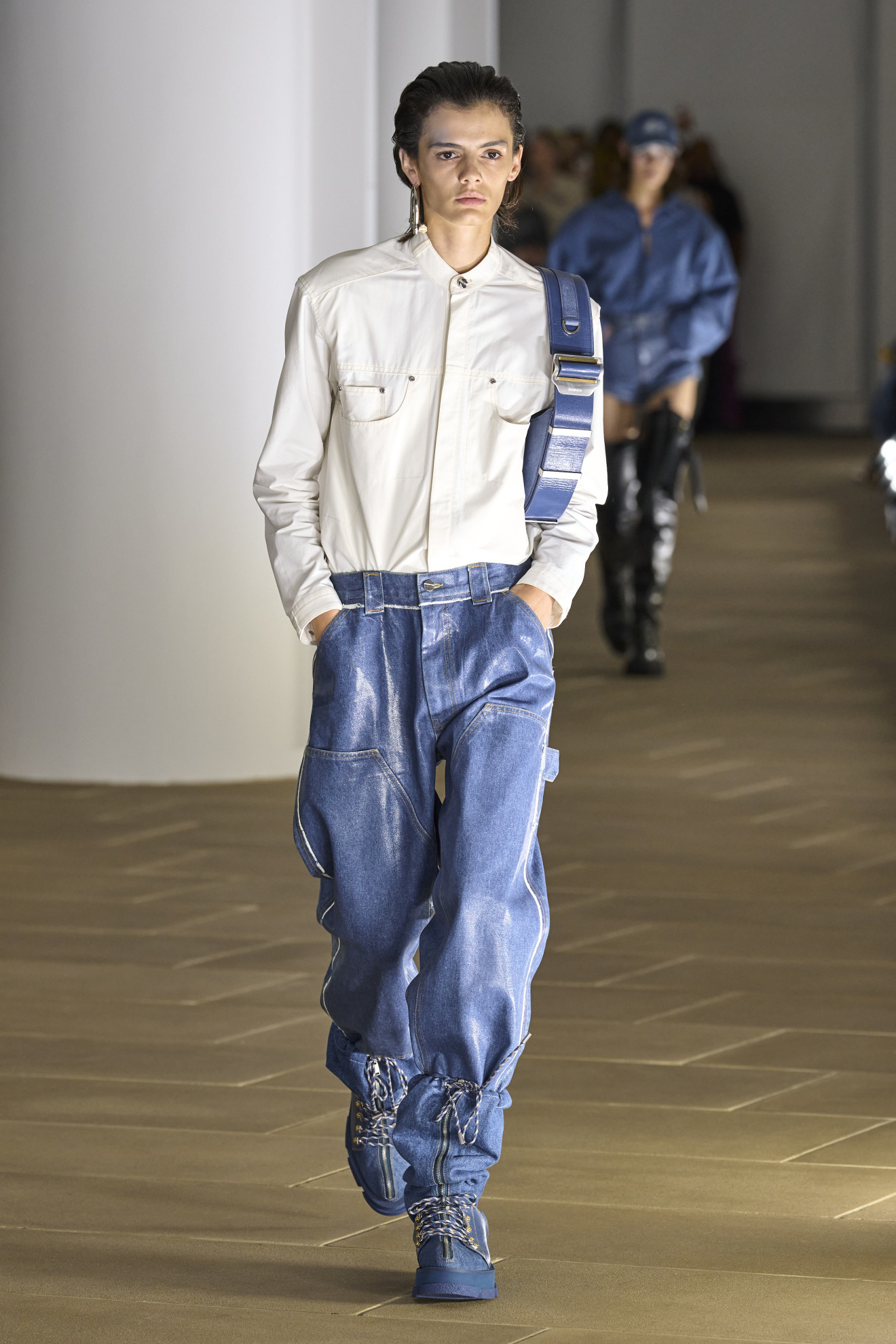
In the past ten years, a couple attempts at a distinctly “non-binary” style have emerged, defined by their rejection or centralisation of sex. In one attempt to skirt around the question of gender presentation altogether, pieces neutralise the body through ambiguity. The baggy cuts, earthen hues, and minimalist ethos of these clothes have become a caricature of androgynous fashion. On the other side of the coin, “genderless” brands such as Dion Lee and Ludovic de Saint Sernin have pursued an aesthetic defined by histories of sex work and club culture, using lingerie and rave-inspired elements like corsets and leather to create looks that reference the fashion developed by Black, queer partygoers in the late 20th century. Both of these are great options for people of any gender who want to look cool and/or hot. Albeit, instead of subverting or toying with the idea of gender at its root, these aesthetics position themselves as belonging to ‘the third gender’. They collapse the complexity of non-binary identity into a category that slots easily into our understanding of gender as a multiple choice question: Is the person wearing a) a ballgown; b) a tuxedo; c) a loose, beige jumpsuit and/or latex fetishwear.
For those whose gender expression is centered around the absolute rejection of masculine and feminine signifiers, these styles can be useful tools for expressing their abstention. However, they can also pigeonhole non-binary people into, once again, orienting their aesthetic around the gender binary (through an attempt to subvert it). Maybe neither earthy minimalism nor eros-charged clubwear doesn’t even jibe with a dressers’ style goals. The conundrum persists: how can non-binary people who want to dress in a gender-affirming way do so without taking one of these approaches that reify traditional ideas of gendered clothing instead of freaking them?
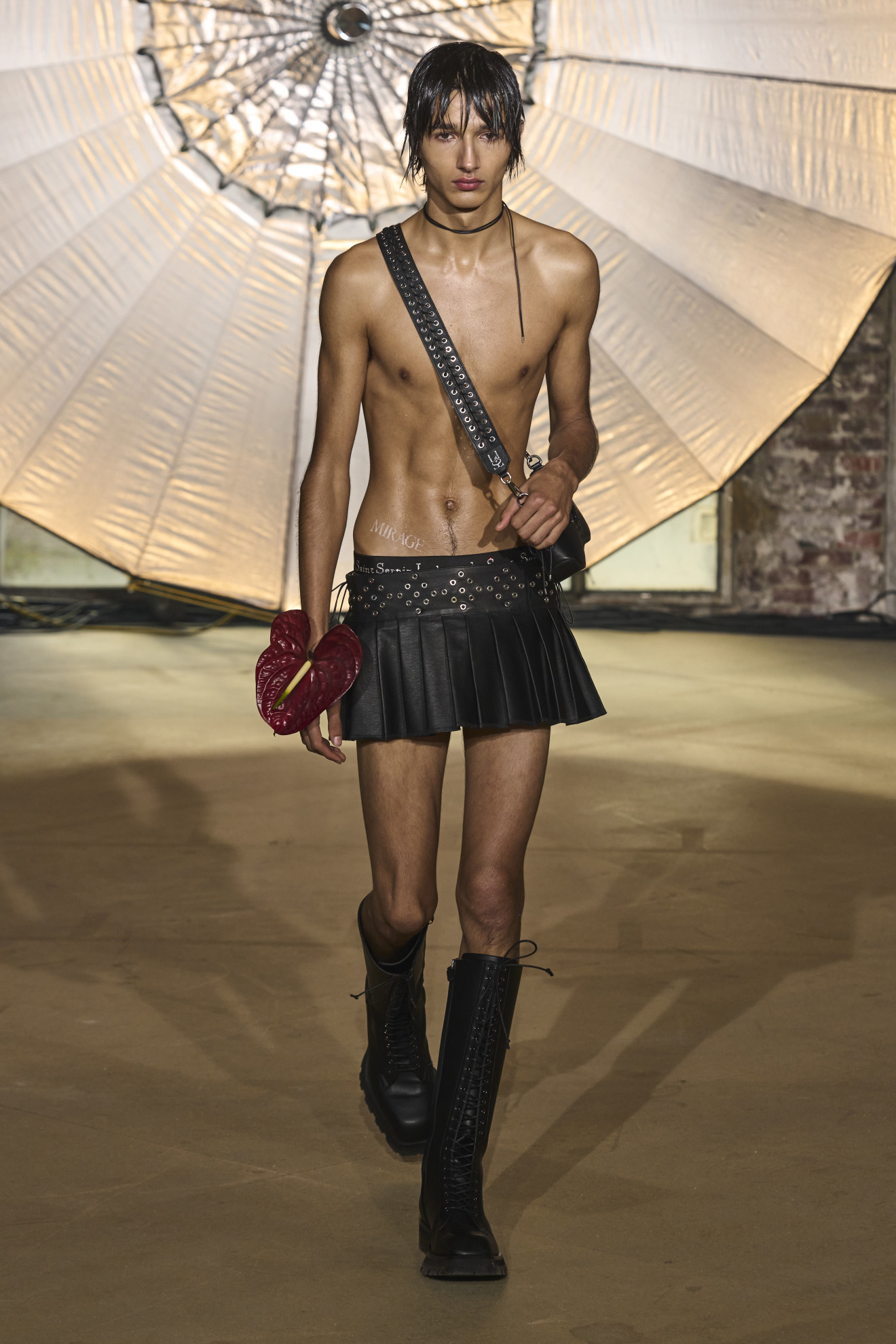
The key may lie in the fact that garments are gendered largely because of the trajectories of their histories as utilitarian objects. The high heels mentioned above were first adapted for the same reason that, centuries later, cowboys favored their iconic boots — the heels hooked on to a saddle’s stirrups, allowing for more maneuverability and stability while fighting on horseback. As women gained more political visibility in the 18th century, they started to adopt high heels as a way to masculinise their looks, though still not allowed to fight on horseback, which led them into a social trap. “The high heel, once separated from its original function of horseback riding, becomes a primary example of impractical dress,” Elizabeth Semmelhack of the Bata Shoe Museum in Toronto told the BBC. Because women adopted a visual signifier of masculinity without being empowered to enact its utilitarian justification — as anyone who’s stumbled over subway grates in even the most forgiving pair of heels can attest to, they’re not the most functional footwear off-horse — the heel’s pragmatism was absorbed by its new function as a purely aesthetic symbol of aspiration, and became synonymous with the idea of femininity as superficial and performative.
Some of the most intriguing entrants into fashion’s new guard, a host of designers and brands that incorporate an inclusive, creative approach to dressing across and outside of a gender binary, are attempting to engage with these questions: What if, instead of trying to reconfigure clothes gendered by centuries-old conceptions of utility into “gender neutral” looks, we started back at square one? What if we developed a sartorial lexicon based on a new utilitarianism as expansive as our contemporary understandings of gender? What are the needs that a garment can fulfill, now that most of us aren’t fighting on horseback or spending all of our days perched upon tuffets, waiting for our soldier to return home?
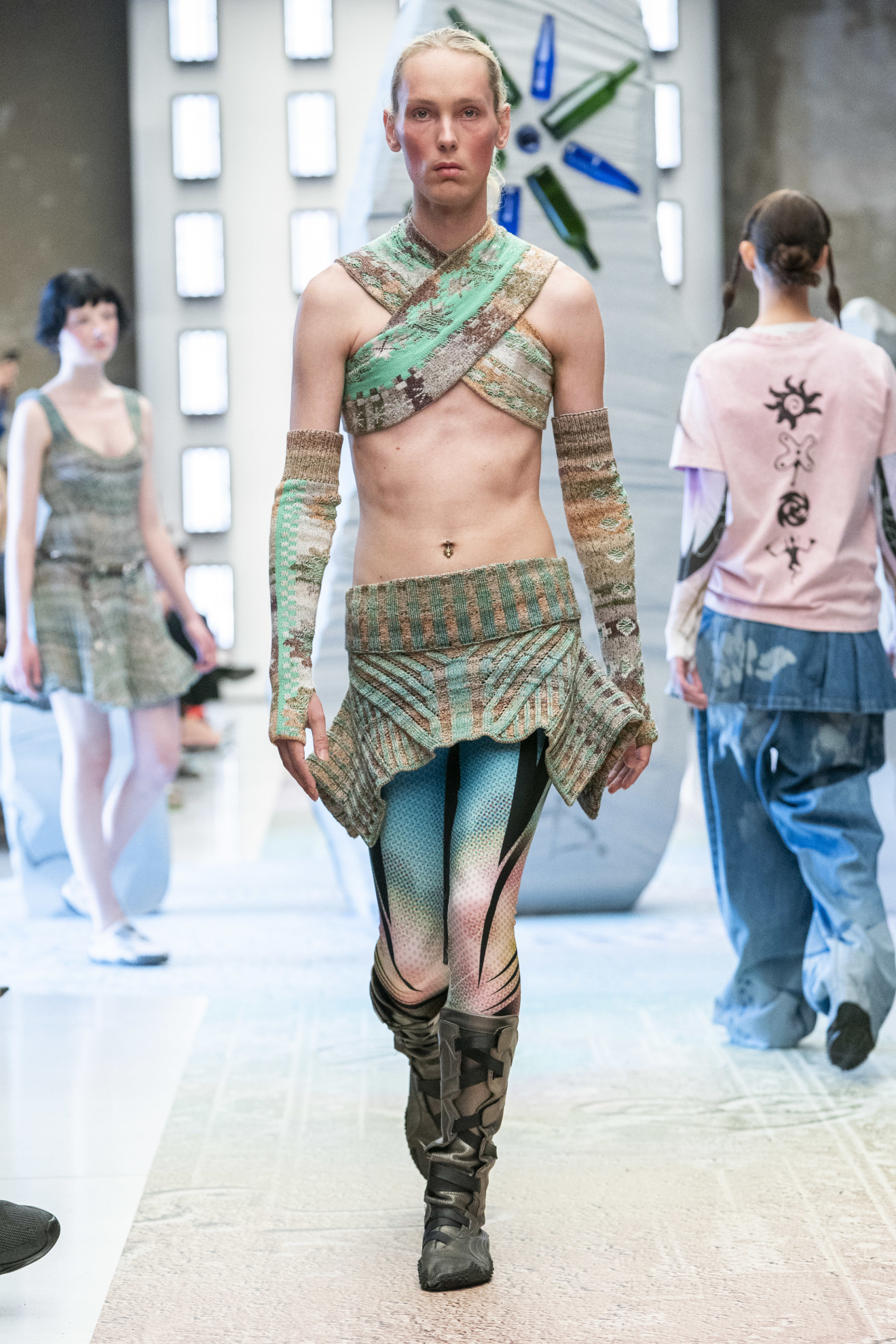
Paolina Russo took cues from our generation’s terminal online-ness, but also our terminal cravings for community and physical touch, designing clothes that function both as armour and an invitation. For her SS24 collection, tops bound the chest like breastplates knit with arcane scribblings but left the torso exposed suggestively, metal discs dripped down the sternum like protective talismans, and bike shorts and technical shoes rendered ruched tunics chafe-proof and primed for a 10-hour rave.
The desire to embody a mystical video game character and remain comfortable while enchanting the dance floor is hyper-contemporary, and addressing it requires a completely new sartorial pragmatism, one that hasn’t calcified into gendered terms quite yet. Hommeboy’s cheekily masculine name belies the fact that the wearers of its clothes are only defined by their need for temperature control, taken care of deftly with convertible cargo shorts/pants, and their earnest search for affection. Here, t-shirts, loudly emblazoned with “LOML WYA RN?”, might be more effective than a dating app in attracting the right kind of attention from a potential soulmate. Foo and Foo’s archive consists of pieces such as its iconic sweatshirt studded with dozens of lighter leashes, addressing the perennial problem of leaving a party with a net negative of firepower, and a hoodie with a built-in mask, which should need no justification in the year 2023.
None of these brands divide their stock by gender, because none of them have to — not because they don’t engage with masculinity and femininity as aesthetic constructs; that will always remain. It’s because they approach each garment as an exercise in utility: How can this piece make its wearer’s life better, easier, more interesting, no matter who they are? In creating a new sartorial code based on fulfilling the needs of a contemporary clothes-wearer, the idea of ‘dressing non-binary’ is sublimated into, simply, ‘dressing’ — and that’s the point.
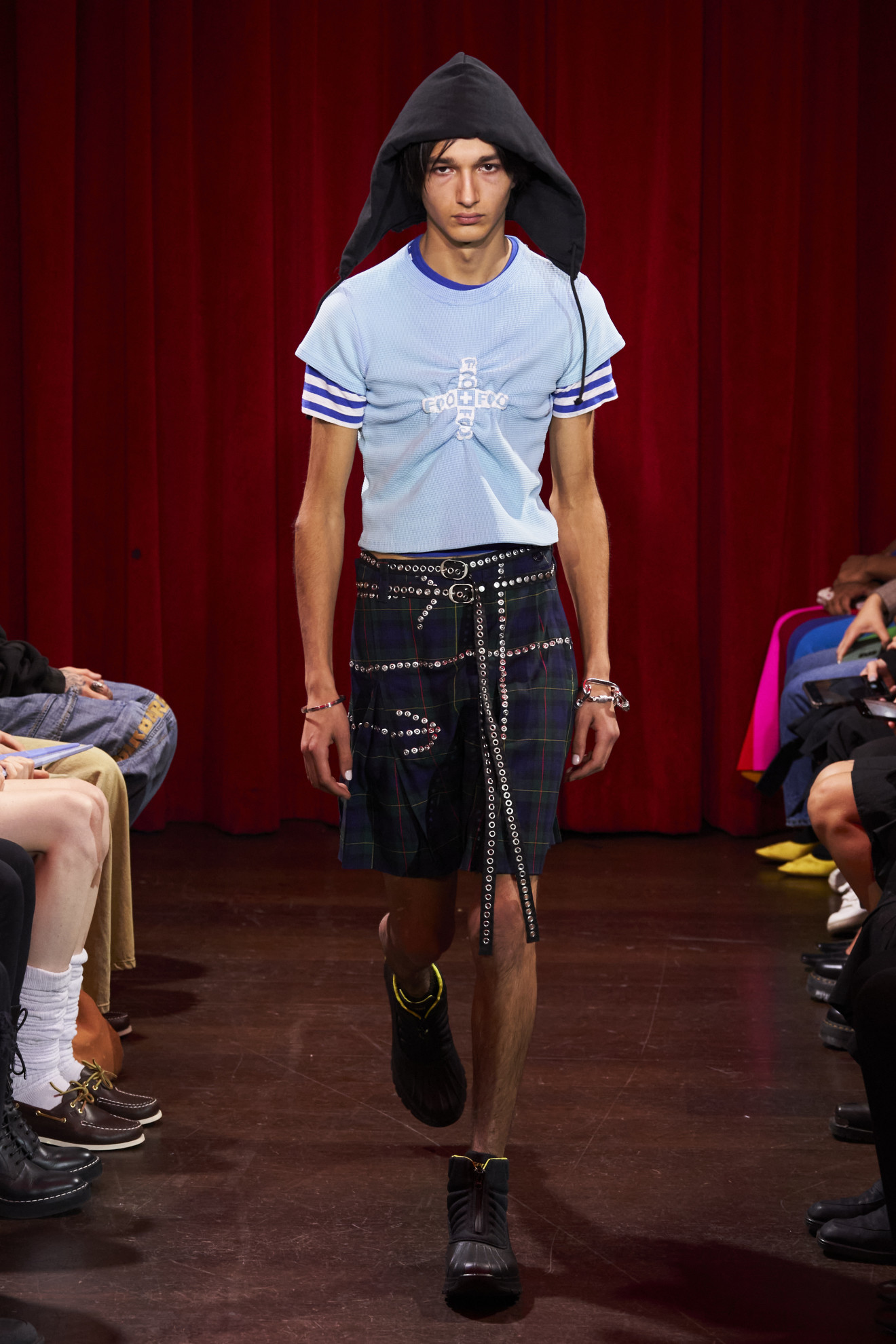
Credits
Images courtesy of Spotlight
